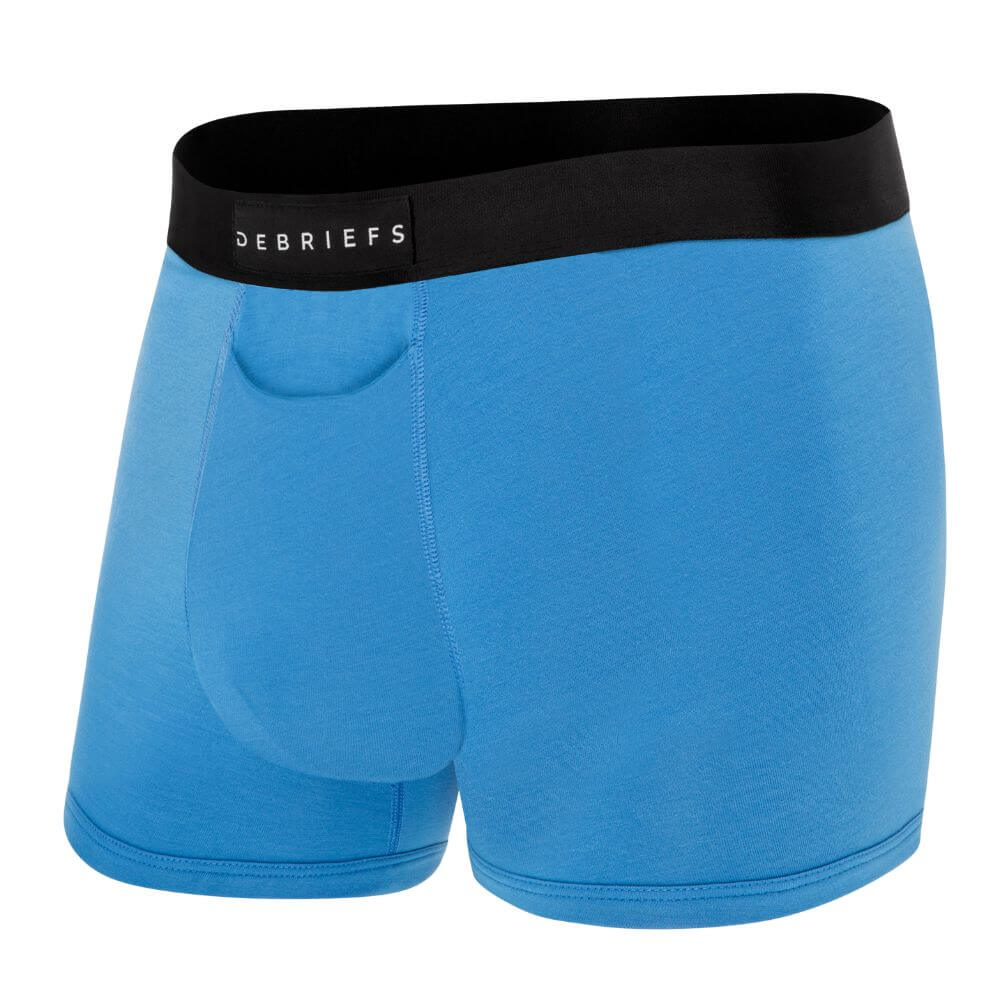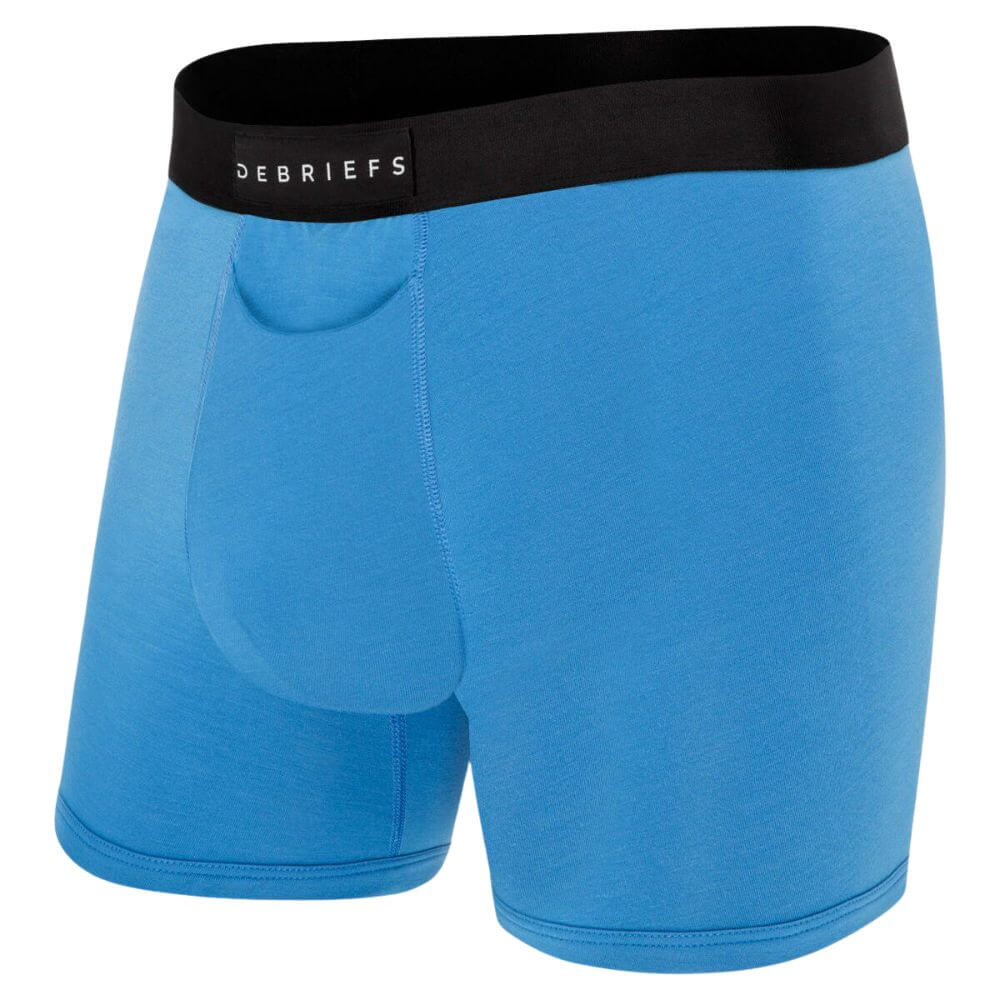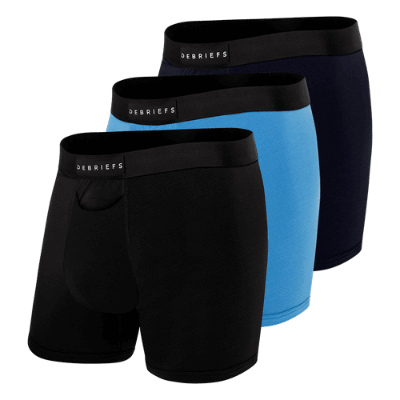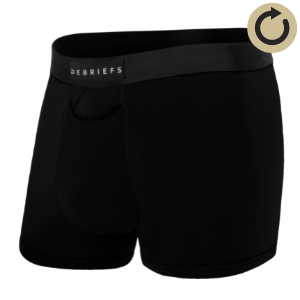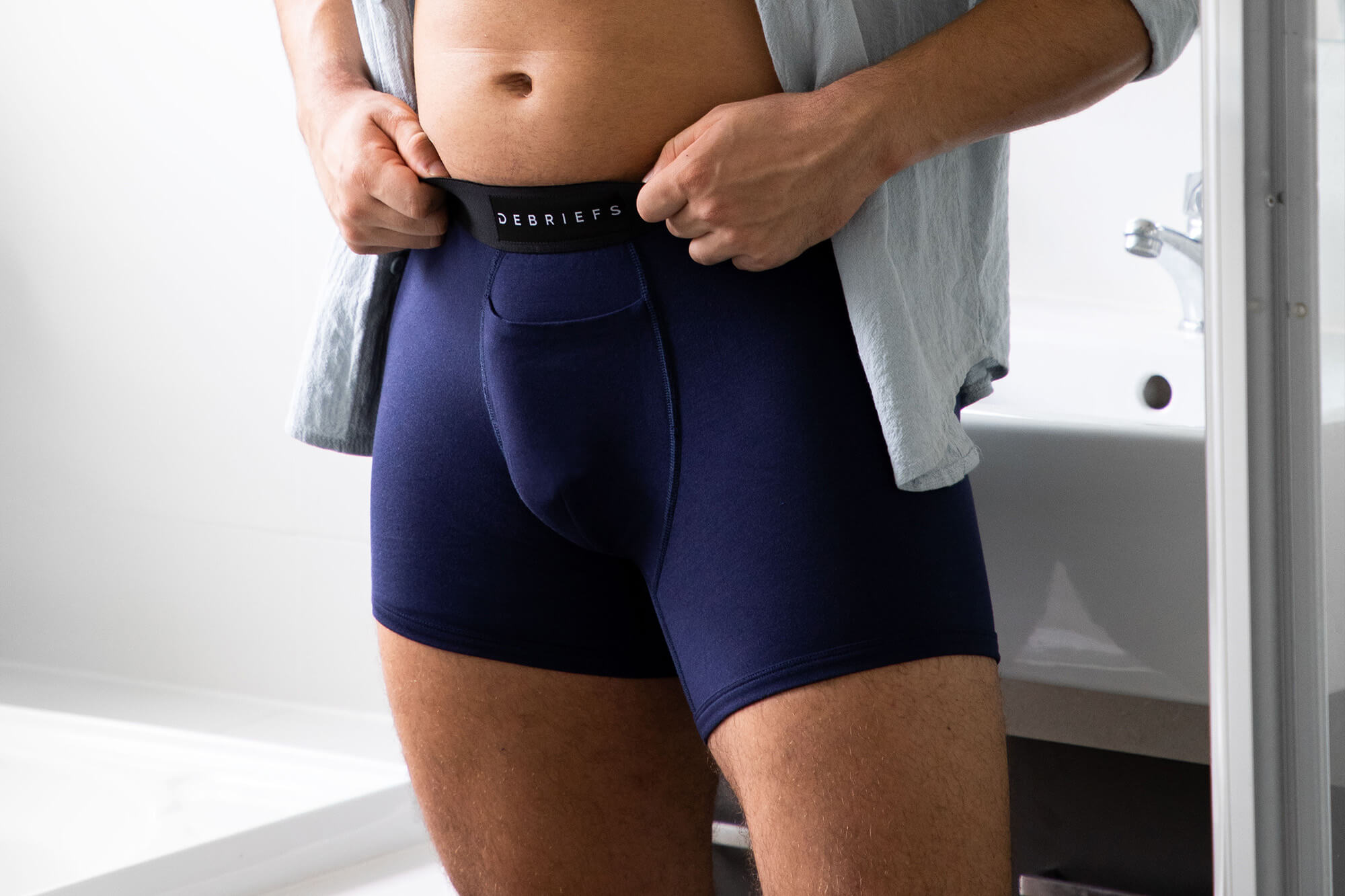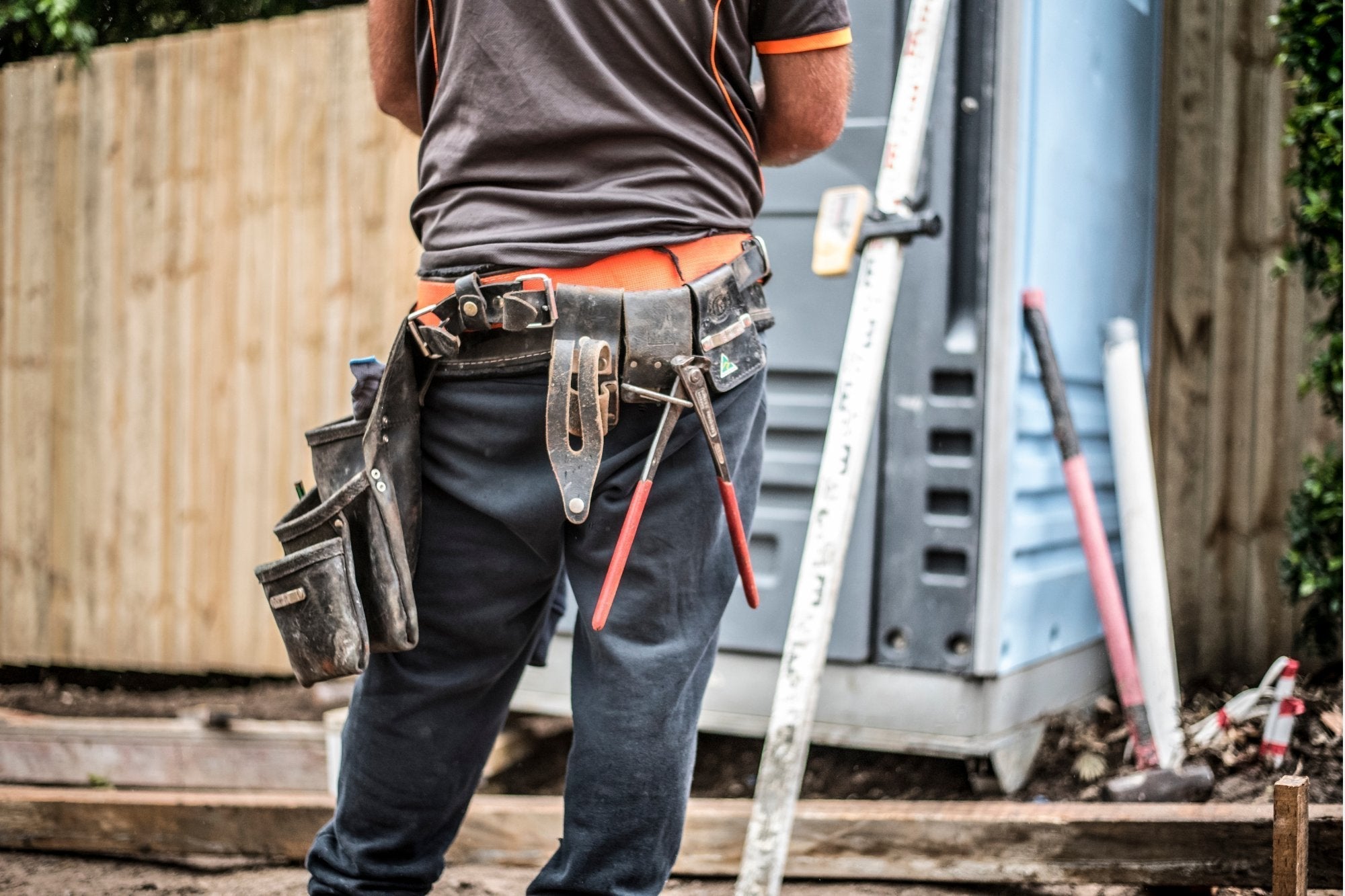Fellas, we need to talk about what's happening downstairs. Specifically, the fabric you trust to cradle the crown jewels. It’s not exactly riveting pub chat, sure, but stick with us, because the fabric you choose for down there has more say in your day than you might realise. Ever found yourself sticky, uncomfortable, or doing that awkward shuffle-and-tug? Chances are, your undie fabric is the culprit.
As blokes, we often grab the same old supermarket multi-packs out of habit, but mate, the undie-world has evolved. The difference between basic cotton, eco-ish bamboo, smooth Modal, and the top-shelf MicroModal isn't just marketing talk. It's the difference between constant discomfort and that glorious feeling of forgetting you're even wearing undies.
In this definitive guide, we're diving deep into the nitty-gritty of men's underwear fabrics. We'll pit cotton vs bamboo, suss out Modal vs cotton, and reveal why the MicroModal vs bamboo debate gets premium undie nerds (like us!) so fired up. By the end of this, you’ll be giving your underwear drawer the side-eye and itching to upgrade those saggy old faithfuls.
Why Your Choice of Undie Fabric Actually Matters (Spoiler: A Lot)
Think about it: your undies are with you from the moment you stumble out of bed for that first coffee right through to kicking back at night. They're the first thing on, last thing off. Yet, bizarrely, they're often the last thing we think about investing decent coin in.
"But mate," you're thinking, "they're just underwear." Are they, though?
Let's break down how the right (or wrong) fabric impacts your life:
- All-Day Comfort (or Lack Thereof): The wrong stuff means chafing, swamp crotch, and constant fiddling. The right stuff? You barely notice it's there. Bliss.
- Health & Hygiene: Some fabrics are basically a sweaty greenhouse for bacteria and fungi. Yeah, nah. Better fabrics breathe and wick moisture away, keeping things fresher and healthier downstairs.
- Your Footprint: From how the raw materials are grown (thirsty cotton fields vs sustainable forests) to how they break down, your undies have an environmental story. Choosing sustainable fabrics is a solid move.
- Your Wallet (Long Term): That $10 three-pack seems like a bargain until they lose shape, get holes, or feel like sandpaper after a few washes. Quality fabrics last way longer, saving you cash over time (cost per wear, fellas!).
When we bang on about premium underwear, we're not just talking about a swanky waistband. We're talking about fabric tech that genuinely makes your day better. It's about prioritising comfort, and that starts with the fabric.
Cotton Underwear: Ye Old Reliable
Cotton's been the default choice forever. It's natural, generally affordable, and familiar.
The Good Bits (Pros)
- Cheap as Chips: Easy on the wallet, widely available everywhere.
- Familiar Feel: It's the texture most of us grew up with. Comforting, like mum's roast.
- Breathable (ish): Allows some air circulation, which is better than nothing.
- Hypoallergenic: Usually fine for sensitive skin (when dry).
The Not-So-Good Bits (Cons)
- Sweat Sponge: This is cotton's Achilles' heel. Once it gets wet (hello, sweat), it stays wet. Damp fabric against your skin all day = chafing, irritation, and potentially funky smells or even infections. Not ideal.
- Loses Shape: Tends to stretch out, go baggy, and develop holes faster than you'd like after washing. Saggy undies? No thanks.
- Shrinkage: Prone to shrinking in a hot wash or dryer. That perfect fit might not last.
- Thirsty Plant: Conventional cotton farming uses a massive amount of water and often relies heavily on pesticides. Organic cotton is better, but still resource-intensive.
Bamboo Underwear: The Eco Contender
Hailed as a greener alternative, bamboo fabric comes from bamboo pulp. It often surprises people with its soft, almost silky feel.
The Good Bits (Pros)
- Eco-Friendly Growth: Bamboo the plant, is pretty good. It grows like wildfire, needs minimal water, no pesticides, and pumps out oxygen. Proper eco-warrior.
- Moisture-Wicking: Better than cotton at pulling sweat away from your skin, keeping you drier. Absorbs significantly more moisture.
- Silky Soft: Often feels much smoother and more luxurious against the skin than standard cotton.
- Temperature Regulating: Helps keep you cooler when it's hot and warmer when it's cold. Handy, especially in Australia.
- Naturally Anti-Bacterial (Kinda): The plant has properties that fight bacteria ("bamboo kun"). Some of this might carry over to the fabric, potentially reducing odour.
The Not-So-Good Bits (Cons)
- Chemical Processing: Turning tough bamboo into soft fabric involves a chemically intensive process (viscose method) that dampens its green credentials. Look for brands using cleaner methods if possible.
- Durability Doubts: Can be prone to pilling (those annoying little balls) and wearing thin quicker than other premium options. Not the toughest bloke in the fabric world.
- Price: Generally costs more than your basic cotton undies.
Modal Underwear: The Smooth Operator
Now we're stepping things up. Modal is technically classed as a semi-synthetic fibre. Why? Because it kicks off completely natural, starting life as pulp from sustainably sourced beech trees. But, it needs to go through a specific manufacturing process to become that ridiculously smooth and resistant fibre. So, natural roots, but with a man-made helping hand to get it ready for your jocks.
The Good Bits (Pros)
- Superbly Soft: Feels incredible against the skin. It’s often described as "silky" or "buttery." Noticeably softer than cotton (around 50% softer).
- Excellent Moisture Management: Wicks sweat away like a champ and dries quickly, keeping you cool and comfortable.
- Holds Its Shape: Resists shrinking and fading, and doesn't get baggy after washing. Your undies stay looking and feeling good for longer.
- Durable: Generally tougher and longer-lasting than cotton and often bamboo too.
The Not-So-Good Bits (Cons)
- Production Matters: Like bamboo, the process matters. Cheap Modal often cuts environmental corners. Reputable producers like Lenzing™ (the original inventors) use eco-friendly, closed-loop processes that recycle water and chemicals, making it a very sustainable choice when sourced right.
- Price Point: You're paying for the step-up in quality and performance, so it's pricier than cotton or most bamboo.
- Availability: Not quite as common as cotton yet, though gaining popularity fast.
MicroModal Underwear: The Top Shelf Choice (Yep, This is Us!)
If Modal is business class, MicroModal is the private jet. It uses even finer fibres spun from beechwood pulp, resulting in a fabric that's unbelievably soft, light, and high-performing. It's the pinnacle of underwear fabric tech.
The Good Bits (Pros)
- Outrageously Comfortable: The softness and lightness are next level. It's that "barely there" feeling you dream of. Seriously, you have to feel it to believe it.
- Supreme Moisture Management: Absorbs about 50% more moisture than cotton and wicks it away efficiently, drying super fast. Keeps you perfectly dry and comfortable, no matter what.
- Incredibly Durable: Despite feeling so luxurious, high-quality MicroModal (like the Lenzing™ stuff we use) is remarkably resistant to washing and wear. It keeps its shape, softness, and fit for ages.
- Highly Sustainable (When Done Right): Sourced responsibly using closed-loop systems (like Lenzing™'s), MicroModal is one of the most sustainable fabrics out there. Minimal environmental impact, maximum comfort.
The Not-So-Good Bits (Cons)
- Premium Investment: This is top-tier stuff, and the price reflects that. It costs more upfront, but the longevity makes the cost per wear surprisingly good value.
- Gentle Care Recommended: While tough, treat it nicely (cold wash, low/no heat dry) to keep it feeling amazing for years.
- Not Everywhere: You'll find it mainly from premium brands (like Debriefs) focused on quality.
Head-to-Head: The Big Fabric Showdowns
Alright, let's cut to the chase with the comparisons you're probably here for:
MicroModal vs Bamboo: The Premium Eco-Battle
- Comfort: MicroModal wins, hands down. Its ultra-fine fibres create a softness and lightness that bamboo, while soft, just can't match.
- Moisture Management: MicroModal is superior. It wicks better and dries faster, crucial for staying comfy, especially during activity or hot weather.
- Durability: MicroModal takes the crown. It holds its shape and luxurious feel far longer through repeated washes compared to bamboo, which can pill or thin out.
- Sustainability: It's close, but different. Bamboo grows greener, but processing is chemically intensive. Responsibly made MicroModal (like Lenzing™) has an incredibly clean production process (closed-loop) and lasts longer, reducing overall waste. We give the edge to high-quality MicroModal for its overall lifecycle impact.
- Verdict: For pure performance, comfort, and longevity, MicroModal is the clear winner, justifying its higher price. Bamboo is a good step up from cotton, but MicroModal is in another league.
Cotton vs Modal: Old School vs New School
- Comfort: Modal feels significantly softer and smoother. Cotton is okay initially but gets uncomfortable when damp. Modal stays comfy.
- Moisture Management: Modal is far better. It wicks moisture away; cotton holds onto it. Big difference in real-world wear.
- Durability: Modal lasts much longer. It resists shrinking, fading, and getting baggy, unlike cotton which degrades relatively quickly.
- Price: Cotton is cheaper upfront, but Modal offers better long-term value due to its longevity.
- Verdict: Modal is a massive upgrade from cotton in every performance aspect. If you're still rocking cotton, switching to Modal will be a total revolution.
Bamboo vs Cotton Underwear: The Natural Fibre Fight
- Comfort: Bamboo generally feels softer and silkier than standard cotton.
- Moisture Management: Bamboo wicks moisture away, whereas cotton absorbs and holds it. Bamboo keeps you drier.
- Eco-Friendliness: Bamboo growth is much kinder to the planet than conventional cotton. Processing impact varies.
- Hygiene: Bamboo's moisture-wicking and potential anti-bacterial properties arguably make it a healthier environment down there than damp cotton.
- Verdict: Bamboo is a definite improvement over cotton, especially for moisture management and initial feel. However, durability can be a concern compared to Modal or MicroModal.
How to Pick the Right Undie Fabric For You
So, after all that, which fabric should you be rocking? Consider this:
- Your Lifestyle: Desk jockey or always on the move? For active blokes or long days, the superior moisture-wicking of MicroModal or Modal is unbeatable. Cotton struggles here. Bamboo is decent for moderate activity.
- Your Climate: Sweating it out in humid Queensland or dealing with dry Melbourne heat? MicroModal and Modal excel in all conditions thanks to moisture management. Bamboo works well in milder/drier climates. Cotton is best reserved for cool, dry days with minimal sweating.
-
Your Budget: What are you prepared to spend for serious comfort?
- Top Tier Comfort/Performance: MicroModal is the investment. Worth every penny.
- Great Upgrade: Modal offers fantastic benefits at a slightly more accessible price than MicroModal.
- Eco-Conscious Mid-Range: Bamboo is a solid step up from cotton, especially if eco-growth is key.
- Bare Basics: Cotton does the job if budget is the absolute main driver, but expect compromises.
- Your Values: If sustainability is high on your list, look for Lenzing™ MicroModal/Modal (for its clean production and longevity) or responsibly processed Bamboo. Do your homework on brand transparency.
Looking After Your Investment: Making Premium Undies Last
Choosing the right fabric is step one; looking after it is step two for getting max value.
- Cotton: Cold/warm wash. Low heat tumble dry or air dry. Replace when saggy/holey (6-12 months usually).
- Bamboo: Cold wash, gentle cycle. NO bleach or fabric softener. Air dry preferred, or tumble dry lowest heat. Watch for pilling.
- Modal: Cold wash, gentle cycle. Avoid bleach. Low heat tumble dry or air dry. Should last 2-3 years with good care.
- MicroModal (Debriefs!): Cold wash, gentle cycle. No bleach/softeners. Air dry is best to keep that amazing feel, or tumble dry on the absolute lowest/coolest setting if you must. Treat 'em right, and they'll last you 3+ years easily.
Pro Tip
Don't just stuff 'em in the drawer. Fold or roll them neatly to help maintain shape and reduce fabric stress. (Yeah, we know, folding undies... but trust us!).
The Final Verdict: Which Fabric Takes the Crown?
After comparing bamboo vs cotton, Modal vs cotton, and the big one, MicroModal vs bamboo, where do we land?
For the bloke who refuses to compromise on comfort, performance, and quality, MicroModal is the undisputed champion. Its incredible softness, top-tier moisture management, and surprising durability make it the best choice for premium men's underwear. Yes, it's an investment, but the difference it makes to your daily comfort is genuinely worth it.
Modal is a close second, offering many similar benefits at a slightly lower price point – a brilliant choice if you're ready to ditch cotton.
Bamboo sits comfortably in the middle – a good, often eco-friendlier step up from cotton, but generally outperformed by Modal and MicroModal in feel and longevity.
Cotton remains the budget baseline. It works, but it simply can't compete with the advanced comfort and performance of modern fabrics.
At Debriefs, we built our brand around our premium Lenzing™ MicroModal underwear because we honestly believe it's the best damn fabric you can put next to your skin. Experience the difference once, and you'll wonder how you ever put up with anything else.
Ready to feel the MicroModal difference? Check out Debriefs MicroModal Collection Here
Frequently Asked Questions (FAQs)
Q: Which underwear fabric is best for blokes with sensitive skin?
A: MicroModal usually takes the win here. Its incredibly fine, smooth fibres minimise friction, and its amazing moisture-wicking keeps skin dry, reducing irritation. Bamboo can also be good due to its softness. Cotton can actually aggravate sensitive skin once it gets damp. If you have specific skin conditions, definitely give MicroModal a try.
Q: Is MicroModal really worth the extra cash compared to cotton?
A: Short answer: For most blokes, absolutely yes. While MicroModal costs more upfront (maybe 3-5x a basic cotton pair), think long term: it lasts way longer (3+ years vs 6-12 months), feels infinitely better, handles sweat brilliantly, and keeps its shape. Calculate the 'cost per wear,' and quality MicroModal often works out cheaper than constantly replacing cheap cotton undies. Plus, the daily comfort upgrade is priceless.
Q: How does bamboo stack up against MicroModal for workouts or sport?
A: Both beat cotton easily, but MicroModal has the edge for serious activity. It wicks sweat more efficiently, dries faster, and feels lighter even when damp. Bamboo wicks well too but can feel a bit heavier when saturated during intense exercise. For a casual gym session, bamboo is fine. For running, intense training, or hot weather sports, MicroModal's superior moisture management makes it the clear winner for performance.
Q: Can basic cotton undies even compete with modern fabrics like Modal?
A: Honestly? On performance, not really. Modal (and MicroModal) are technically far superior – softer, better moisture control, more durable. Cotton's main advantages are its low price and familiarity. Some cotton blends (with spandex/elastane etc.) try to bridge the gap, offering better stretch and some moisture management than 100% cotton, but they still generally fall short of the premium feel and performance of pure Modal or MicroModal.
Q: What's genuinely the most eco-friendly underwear fabric?
A: It's complex! Bamboo growth is very sustainable. However, turning it into fabric often uses chemicals. Conventional cotton is resource-heavy. Responsibly made MicroModal (like Lenzing™) uses sustainable beechwood and a 'closed-loop' production that recycles almost all water and solvents, making its manufacturing incredibly clean. Plus, its durability means you buy less often, reducing waste. So, considering the whole lifecycle (growth, production, lifespan), high-quality, responsibly sourced MicroModal often comes out on top as the most sustainable overall choice. Always look for brands transparent about their sourcing and production!

